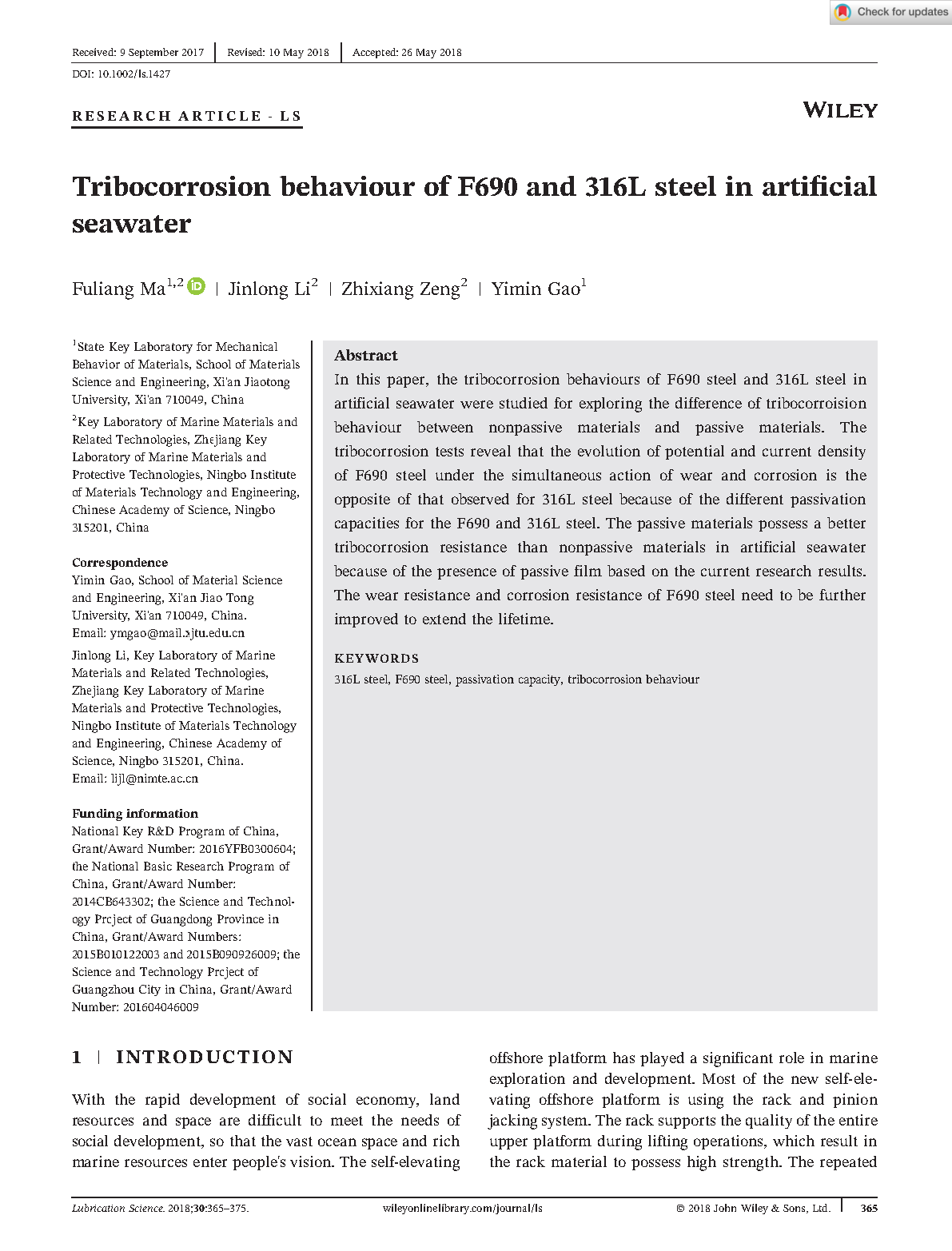In this paper, the tribocorrosion behaviours of F690 steel and 316L steel in artificial seawater were studied for exploring the difference of tribocorroision behaviour between nonpassive materials and passive materials. The tribocorrosion tests reveal that the evolution of potential and current density of F690 steel under the simultaneous action of wear and corrosion is the opposite of that observed for 316L steel because of the different passivation capacities for the F690 and 316L steel. The passive materials possess a better tribocorrosion resistance than nonpassive materials in artificial seawater because of the presence of passive film based on the current research results. The wear resistance and corrosion resistance of F690 steel need to be further improved to extend the lifetime.
